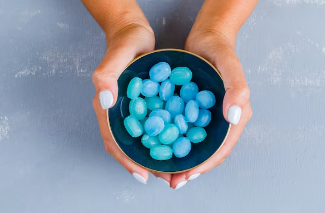A Look at its Appearance, Habitat, and Traditional Uses Amanita muscaria, also known as the fly agaric or fly amanita, is instantly recognizable for its striking appearance. Its cap, typically 3-10 inches wide, is a vibrant red, often adorned with white warts or patches. These warts are remnants of the universal veil that protected the young mushroom. Underneath the cap, the gills are white and closely packed, contrasting beautifully with the red cap. The stalk, white and sometimes tinged with red, grows up to 6 inches tall and features a bulbous base with a distinct white ring. A cosmopolitan mushroom, Amanita muscaria thrives in coniferous and deciduous forests throughout the temperate and boreal regions of the Northern Hemisphere. It often forms symbiotic relationships with various trees, such as pine, spruce, fir, birch, and cedar, aiding in the transfer of nutrients to their roots. This characteristic association helps guide mushroom hunters in their search for this iconic fungus. Traditional Uses: For centuries, cultures across the globe have utilized Amanita muscaria for various purposes, both medicinal and spiritual. Its psychoactive properties, stemming from the presence of ibotenic acid and muscimol, have been employed in: Religious ceremonies: Certain cultures have used Amanita muscaria in rituals and ceremonies to induce altered states of consciousness and connect with the spirit world. Traditional medicine: Practitioners of indigenous medicine have employed Amanita muscaria for treating various ailments, including pain, anxiety, depression, epilepsy, and insomnia. Stimulant and tonic: In some cultures, Amanita muscaria has been consumed as a stimulant or tonic, providing energy and focus. It’s important to note that while traditional use indicates potential benefits, further scientific research is crucial to validate these claims and determine safe and effective dosages. Amanita muscaria’s captivating appearance, diverse habitat, and long history of traditional uses continue to intrigue scientists and enthusiasts alike. As research continues to unveil its potential therapeutic effects, we can anticipate a deeper understanding of this fascinating fungus and its role in the future of medicine and human well-being. Unveiling the Potential of Amanita Muscaria: A Dive into its Psychoactive Properties and Effects Amanita Muscaria, with its vibrant crimson cap and long history of use, has captivated humans for centuries. Beyond its captivating appearance, lies a complex world of psychoactive compounds, primarily ibotenic acid and muscimol, that have fueled both cultural traditions and modern scientific curiosity. Understanding the potential effects of these compounds is crucial for responsible exploration and informed decision-making. Ibotenic Acid and Muscimol: Ibotenic acid, the primary psychoactive compound in Amanita Muscaria, readily converts to muscimol, the main contributor to its psychoactive effects. Muscimol acts as a GABA receptor agonist, mimicking the action of the inhibitory neurotransmitter GABA. This interaction results in a range of potential effects, including: Relaxation and sedation: GABA’s calming effects can lead to feelings of relaxation and drowsiness. Altered perception and sensory experiences: The influence on various brain regions can induce visual and auditory hallucinations, as well as distortions in time and space perception. Increased emotional intensity: Muscimol can intensify emotions, leading to feelings of euphoria, joy, and laughter, but also potentially triggering anxiety or paranoia. Dissociation: In higher doses, Amanita Muscaria can induce a sense of detachment from reality and one’s own body. Potential Benefits and Risks: While these effects can be intriguing, it’s crucial to consider both potential benefits and risks. Emerging research explores the potential therapeutic applications of Amanita Muscaria for various conditions, including: Anxiety and depression: Muscimol’s calming effects may offer relief for individuals struggling with these conditions. Chronic pain: Its analgesic properties show promise in managing pain symptoms. Neurodegenerative diseases: Muscimol’s neuroprotective effects may offer benefits for conditions like Alzheimer’s and Parkinson’s disease. However, these potential benefits come with inherent risks: Toxicity: Amanita Muscaria can be poisonous in high doses due to the presence of ibotenic acid. Individual variability: Sensitivity to Amanita Muscaria varies significantly, making it crucial to start with low doses and consult a healthcare professional before use. Interactions with other substances: Amanita Muscaria can interact with other medications or substances, potentially causing dangerous reactions. Responsible Use and Harm Reduction: Given the potential benefits and risks associated with Amanita Muscaria, responsible use and harm reduction strategies are essential: Purchase from Licensed Sources: Ensure product quality and safety by purchasing from licensed manufacturers. Research and Education: Thoroughly research the potential benefits and risks before consumption. Follow Recommended Dosages: Start with low doses and increase gradually as needed. Avoid Combining with Other Substances: Consult a healthcare professional before using Amanita Muscaria while taking other medications or substances. Store Securely: Keep Amanita Muscaria products away from children and pets. Amanita Muscaria holds fascinating potential for therapeutic applications. However, understanding its complex psychoactive properties and potential effects is crucial for responsible exploration. By approaching this journey with caution, knowledge, and a commitment to responsible use, we can unlock the potential of this intriguing fungus while ensuring safety and well-being. Distinction from Psilocybe cubensis: Distinguishing Amanita Muscaria from Psilocybe cubensis: Separating Two Iconic Mushrooms. While both Amanita Muscaria and Psilocybe cubensis are popularly recognized as psychoactive mushrooms, they possess distinct characteristics that set them apart. Understanding these differences is crucial for proper identification, safe consumption, and informed decision-making. Amanita Muscaria: Large, vibrant red with white warts or patches. Psilocybe cubensis: Brown or golden brown with a smooth, cone-shaped cap that flattens with maturity. Amanita Muscaria: White and closely packed. Psilocybe cubensis: Dark brown or purple-brown with a distinct black spore print. Amanita Muscaria: White, sometimes tinged with red, with a bulbous base and a distinct white ring. Psilocybe cubensis: White or off-white, often with a white ring that disappears with maturity. Habitat: Amanita Muscaria: Forms symbiotic relationships with various trees in coniferous and deciduous forests. Psilocybe cubensis: Found in dung-rich areas, such as meadows, fields, and pastures. Psychoactive Compounds: Amanita Muscaria: Ibotenic acid and muscimol. Psilocybe cubensis: Psilocybin and psilocin. Effects: Amanita Muscaria: Can induce a variety of effects, including nausea, vomiting, hallucinations, euphoria, and drowsiness. Psilocybe cubensis: Primarily induces visual and auditory hallucinations, altered perception, and







